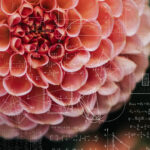Have you ever helped your parents clean up a spill at home? Our oceans can sometimes have spills too, but, unlike a splash of milk or a puddle of soda pop, these spills can cause some real problems. As our cities grow and more people get cars to drive around, we need more fuel for power and this fuel can come from an “off-shore” oil rig. These rigs are engineered with extreme care, but accidents happen, causing oil to spill into the ocean, threatening the animals and plants that live there. Scientists have worked to create the best methods to clean up these slick spills, but it can be tricky! In this DIY activity, you will try to figure out the best way to clean up an “oil spill” of your own!
Materials
- Large, Shallow Container (casserole dish, cake pan, etc.)
- Modeling Clay
- Water
- Oil (vegetable, canola, etc.)
- Sponge
- Spoon
- Dish Soap
Activity
Take the modeling clay, and create land masses on the sides of your container. After making the land masses, fill the container with water, making your ocean. Now it is time for the oil spill… OH NO! Pour some oil into the middle of your ocean. Watch what happens to the oil. Does it stay in the same place, or does it spread out? You better clean up the oil before it gets bigger!
- Try taking the sponge and absorbing the oil into the sponge. Did that clean up the oil spill? On to the next method.
- Take your spoon and try to scoop out the oil just like the boats scoop out the oil in the ocean. Did that clean up the oil spill?
- Finally squeeze some dish soap onto the oil. Did that clean up the oil spill? What happened when you put the dish soap on the oil?
The Science
This experiment teaches you how scientists actually clean up oil spills that happen in our oceans. The three methods that are routinely used are absorption, skimming, and dispersants. Scientist can absorb the oil by using giant sponges, to suck all of the oil out of the water. Scientists will also take out boats that have big bags attached that “skim” the oil from the surface of the water. As the boats sail around the spill, the bags collect all of the oil as it sits on the surface of the water. Last, but not least, they can use a dispersant like dish soap to literally “clean up” the oil! Scientists don’t agree on which method works best. Discuss which of the three worked best for you!
Further Exploration
- Which one of the methods cleaned up the most oil? Which was easiest?
- Can you think of another way that could help clean up oil? Test out your theories on a new “spill.”
- Could you use some of these methods to clean up spills in your house?
What Next?
- Come to the Adventure Science Center all July to learn more about the ocean and the plants and animals that may be affected by an oil spill!
- Learn more about oil spills and how to clean them up!




